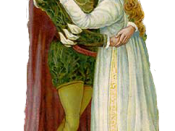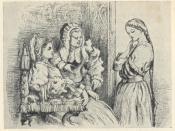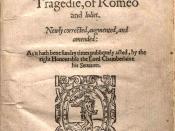"Romeo and Juliet" is the tragic tale of forbidden love, fate and destiny. The prologue is important as it introduces these key themes and creates dramatic irony. It is introduced by a chorus - to give us a commentary and summary of the action. The dramatic irony whets the audience's appetite for the play, and the prologue helps the lower class audience understand the storyline easier. Act 1 Scene 1 grabs the attention of both the higher and lower classes of audience with the use of poetry for the higher classes and the comical influences would draw the lower classes into the play.
Modern film adaptations of "Romeo and Juliet" - such as Baz Luhrmann's version - appeal to modern audiences because of special effects, lighting and sound. Shakespeare on the other hand used only the language he wrote down and the space on the stage in front of him to create dramatic tension and hold the audience's interest.
Shakespeare's "Romeo and Juliet" originated from an English poem, "The Tragical History of Romeus and Juliet" by Arthur Brooke. It was published in 1562 and was written in the popular style of the sonnet. Shakespeare's main change to the poem was the duration of the events that took place. Instead of taking three months, the proceedings took a mere five days. This increased dramatic tension in the story by speeding up the pace, showing us that the nature of young love is passionate and impulsive.
The audience would have already been familiar with the story as they would have known the original version. The prologue introduces what you are about to see, and brings up the key themes of the play such as fate and death. These are explained with phrases such...


